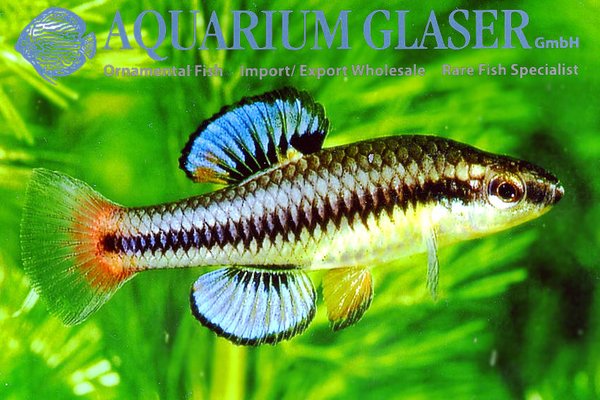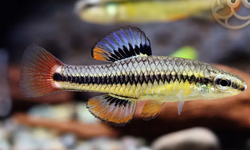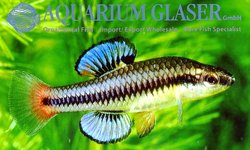Bluefin Killifish (Lucania goodei)
Killifish, lot number 520-1Auction Details:
Hello, you are bidding on 1 male Bluefin Killifish. This guy came to us with one of our plant orders, surviving solely on the moisture in the plant container. He likely hitchhiked as an egg or fry, and we’ve grown him to adult size. Since we don’t have any future plans for him, we’re looking for a new home where he can continue to thrive. He’s unique and beautiful, making a great addition to any planted tank. While he does well on his own, he would certainly enjoy the company of more killifish. We’ve enjoyed keeping him in one of our guppy tanks, and he’s been a delightful guest!
Species Details:
Lucania goodei, commonly known as the bluefin killifish, is a small species of fish in the family Fundulidae, native to the southeastern United States. First described by David Starr Jordan in 1880, its scientific name honors ichthyologist George Brown Goode. This species is part of the order Cyprinodontiformes, commonly known as tooth carps. While native to Florida and parts of Alabama and South Carolina, it has been introduced to California, Texas, and North Carolina.
Description Bluefin killifish are slender, elongated fish with a maximum length of 6 cm, though they rarely exceed 5 cm in aquariums. Their body is oval-shaped and streamlined, with a rounded nose and upturned mouth, allowing them to gulp air from the water's surface in low-oxygen environments. They feature two rows of teeth in their jaws, distinguishing them from other Fundulus-like species. Their lifespan is typically around two years. In aquariums, they can thrive in temperatures ranging from 12°C to 22°C and are relatively easy to care for.
Habitat and Ecology Lucania goodei inhabits slow-moving or stagnant waters like ponds, lakes, swamps, and streams. They prefer heavily vegetated environments, often found near natural springs. This species can tolerate moderate salinity and fluctuating temperatures, from as low as 5°C to as high as 25°C, and are known to swim in schools well below the water's surface. Despite being a killifish, it is not a seasonal fish and can adapt well to different aquatic environments.
Breeding Bluefin killifish breed best at temperatures between 18°C and 19°C. At higher temperatures (above 23°C), eggs are often left unfertilized. Mating can be intense, and eggs are deposited on fine-leaved aquatic plants, where they remain attached by slime threads. A female can lay 2 to 5 eggs per day for several weeks, totaling up to 200 eggs. The eggs hatch in about one week, with fry developing quickly. Males begin showing their characteristic red tails within five to six weeks.
Care and Maintenance In aquariums, bluefin killifish thrive in well-planted tanks with a humus-rich substrate. They prefer small live foods like insects, insect larvae, and invertebrates but will also accept dry food. They are sensitive to water changes, especially fresh tap water, so gradual acclimatization to new environments is essential.
Conservation Status The species is classified as Least Concern by the IUCN, indicating a stable population in its native and introduced habitats.
| Quantity: | 1 |
| Seller: | A donation from Tong@TongsFishRoom (All lots from Tong@TongsFishRoom) |
| Minimum bid: | $5 |
| Ends: | Ends when sold |
| Views: | 33 views, 1 watching |
View all lots for The MAS In-Person Fall Auction



